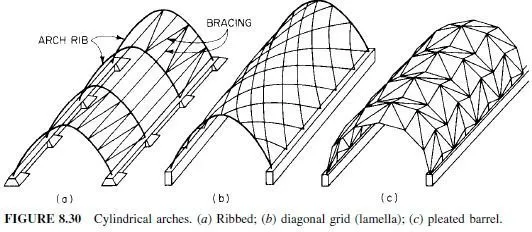Since all arches are subjected to large compressive stresses and also usually carry significant bending moments, stability considerations must be addressed. The American Association of State Highway and Transportation Officials (AASHTO) Standard Specifications for Highway Bridges contain provisions intended to ensure stability of structures.
For true arches, the design should provide stability in the vertical plane of the arch, with the associated effective buckling length, and also provide for moment amplification effects.
For tied arches with the tie and roadway suspended from the arch, moment amplification in the arch rib need not be considered. For such arches, the effective length can be considered the distance along the arch between hangers. However, with the relatively small crosssectional area of the cable hangers, the effective length may be slightly longer than the distance between hangers.
For prevention of buckling in the lateral direction, a lateral bracing system of adequate stiffness should be provided. Effective lengths equal to the distance between rib bracing points are usually assumed. Special consideration should be given to arch-end portal areas.
Lateral torsional buckling for open I-section ribs is much more critical than for box ribs and must be prevented.
Local buckling of web and flange plates is avoided by designs conforming to the limiting plate width-to-thickness ratios in the AASHTO standard specifications. If longitudinal web stiffeners are provided, additional criteria for their design are available (Art. 11.12).



